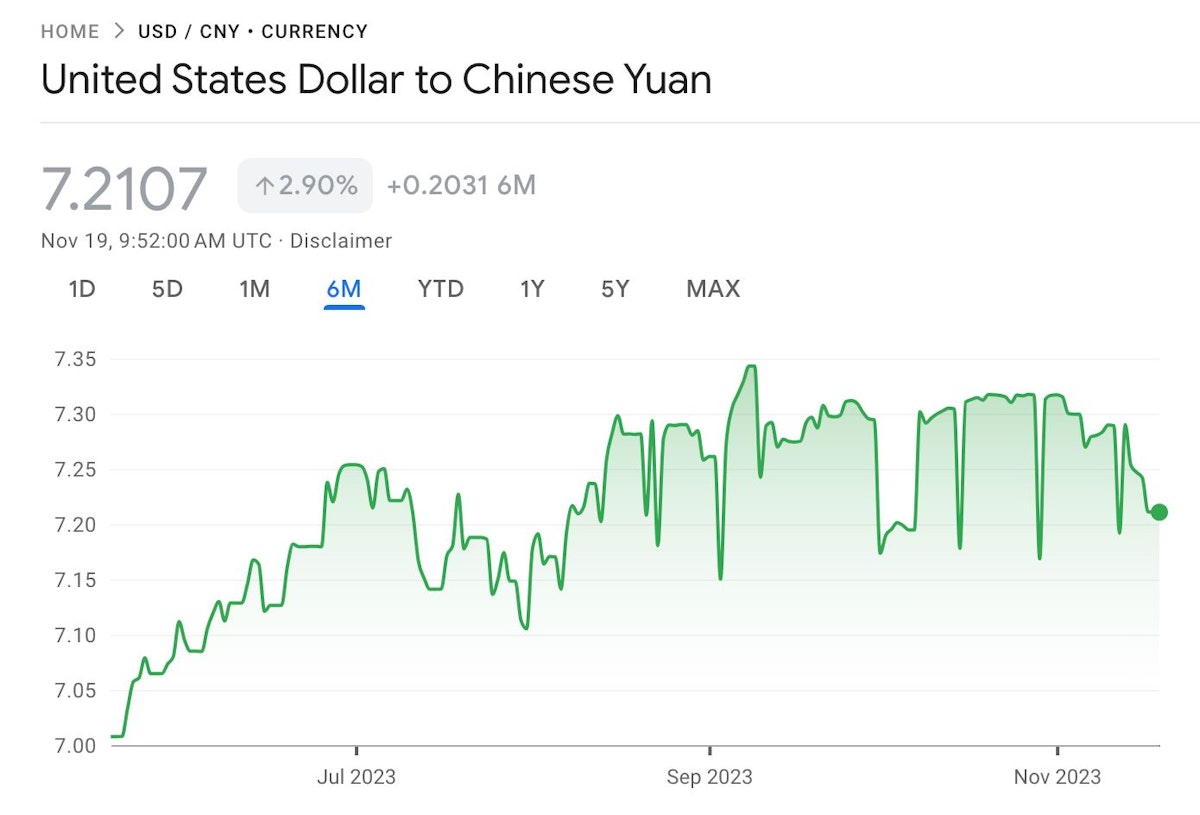The US dollar remains the world’s favorite reserve currency, but its dominance has come under unprecedented levels of scrutiny in recent times. Could USD be at risk of falling behind new rivals? And will this impact its status in the world of forex?
International trade and transactions historically revolve around the dollar, but recent geopolitical conflicts have made more nations wary about their dependence on US currency.
“The risk of de-dollarization, which is a periodically recurrent theme throughout post-war history, has returned into focus due to geopolitical and geostrategic shifts,” warns Alexander Wise, Strategic Research analyst at J.P. Morgan.
As more economic headwinds have lingered throughout 2022 and 2023 such as high inflation rates and subsequent Fed interest rate hikes, the dollar is not only becoming less trustworthy but more expensive to use.
We’re already seeing de-dollarization in action in South America. July 2023 saw Bolivia join Brazil and Argentina in paying for imports and exports using the Chinese renminbi.
In addition to this, a new gold rush has been taking place since the beginning of 2022 as nations consciously seek to move away from their heavy reliance on the dollar.
According to data from State Street Global Advisors, monetary authorities across several nations made net purchases of 387 metric tons of gold in the first half of 2023 alone, after buying a record-breaking 1,083 tons throughout 2022.
The move has occurred as more nations seek to diversify their assets in a bid to improve their balance sheets and gain liquidity without credit risk.
De-Dollarization and FX
In a nutshell, de-dollarization takes place when countries intend to reduce the influence of the dollar over their respective economies. Dollars have historically been favored as a reserve currency for many economies because it’s widely used and show relative strength in which to execute international trades and transactions efficiently.
The issue here is that when economic headwinds begin to impact the strength of the dollar, countries can become interested in utilizing a new reserve currency.
Finding a currency to replace the dollar can be hard work, and major alternatives have generally included the euro, yen, and British pound sterling.
However, in recent years, China has ramped up the capabilities of its renminbi as an attractive reserve currency to the dollar. While we’ve seen widespread adoption among central banks, particularly in South America, the currency’s share of global reserves remains at less than 2.5%. Despite this, the rise of renminbi reserves accounts for around a quarter of the decline in the distribution of the dollar, with Russia holding a third of all reserves in the Chinese currency.
While we’re also seeing de-dollarization lead to a rise in central bank holdings in gold, the impact of the movement across FX markets is becoming increasingly clear.
“De-dollarization is evident in FX reserves where USD share has declined to a record as share in exports declined, but is still emerging in commodities,” claimed JPMorgan.
This has made the forex landscape a surprising geopolitical battleground where the US continues to fight to preserve the status of the dollar. While USD has begun to lose ground to gold due to rising central bank adoption, the currency still holds a strong 43% share of SWIFT payments, signifying its dominance.
Battling the BRICs for USD Dominance
Forex markets have shown that one of the biggest threats to the dollar comes in the form of the emerging BRIC nations of yesteryear. Now with many of the BRIC nations emerging as powerhouses in their own right, USD is facing fresh competition throughout the FX ecosystem.
Brick alliances formed a catalyst for de-dollarization in early 2023 with some nations looking into abandoning the dollar for brokering global trades.
Despite the dollar’s 43% share of SWIFT, this BRIC initiative is becoming more of a reality, with more nations considering the merits of abandoning USD.
While there are tangible levels of distrust forming with the dollar, we’re yet to see China’s push to compete with USD manifest itself on forex markets.
Recent USD/CNY trends have seen the trading pair move more sideways without either currency capable of breaking the deadlock.

“As China has shown a stronger determination lately to defend the CNY and sentiment is already very weak, we have lowered our expectation of the pace of CNY weakening against the USD,” explained a Danske Bank economist.
How can Forex Traders Anticipate De-Dollarization?
Should forex traders be looking for de-dollarization? Is the strength of the dollar set to come under greater pressure in the coming months?
Evidence suggests that no single successor will overpower USD, but the emergence of multiple alternatives may point to a fragmented landscape. This push for a more diverse network of reserve assets could significantly impact the forex landscape. Even assets like corporate debt, real estate, and alternative currencies could come into play when it comes to reserve asset blocks.
“This is the process that is underway. The dollar is going to be used less in the global system,” explains Mark Tinker, managing director of Toscafund Hong Kong.
While this will bring more uncertainty to the FX markets of tomorrow, the arrival of new reporting features from MetaQuotes designed for its flagship MetaTrader 5 terminal could help traders to more accurately observe the performance of key symbols that can illustrate the relative strength of the dollar against its rivals.

The new reporting format, which was launched as part of a major update in September 2023, can help to provide traders with a more direct overview of specific pairs, their respective profit factors, and percentage-based performance over time.
This ability to observe trends surrounding the performance of USD in a more holistic manner alongside external asset performance can help forex traders to more accurately adapt their strategy based on the climate surrounding de-dollarization.
As economic headwinds and geopolitical frictions persist, the dollar may be facing an unprecedented level of uncertainty regarding its dominant status in FX. Traders should adapt to this changing environment by incorporating these factors into their fundamental analysis.
Whether the push for de-dollarization is sustainable or not, we’re likely to see the battle for dominance played out throughout the world of forex.
This article was originally published by Dmytro Spilka on Hackernoon.












